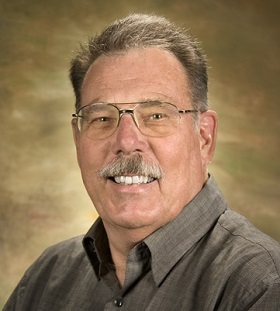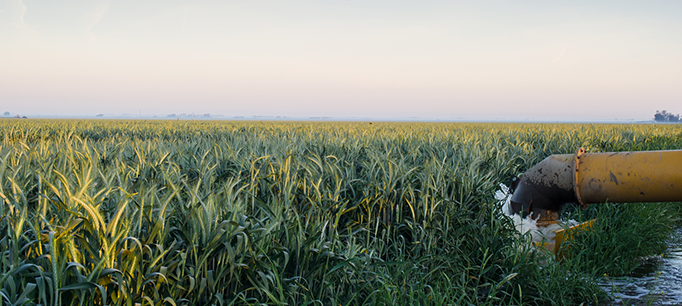California’s groundwater management took a forward-looking turn with last year’s passage of the Sustainable Groundwater Management Act (SGMA), which requires local planning efforts to protect the long-term viability of this critical resource. Sarge Green—a water management specialist at California State University, Fresno, and a member of the PPIC Water Policy Center’s research network—is working to put the groundwater law into practice at the local level. We talked to him about creative approaches being tried in the San Joaquin Valley.
 PPIC: Talk about the regional groundwater management effort you’re involved in.
PPIC: Talk about the regional groundwater management effort you’re involved in.
Sarge Green: I’ve been participating in a joint effort of eight counties in the San Joaquin Valley, which is looking at key issues—education, air quality, water, transportation. Water is now the top priority for this planning effort, not surprisingly.
The San Joaquin has the largest overdrafted groundwater area in the state. Our task is to find common tools or projects to improve our groundwater situation, and try to get support for them with state or federal grants. We’re designing a local groundwater ordinance with elements that address unsustainable groundwater extraction impacts and permits for new wells.
This valley is a study in contrasts. At one end is the Delta, and at the other end is a major importer of Delta water. Getting all the counties together was groundbreaking. Our organizing principal is: we agree on a majority of things having to do with water, but historically we’ve spent most of our time on the things we disagree on. We’re focusing on what we agree on and getting things done.
PPIC: What is a logical scale for managing groundwater?
SG: Groundwater knows no political boundaries. Basically there’s one big basin. The logical planning scale is the watershed—the areas around the rivers and the mountains that contribute to our valley groundwater. But one constraint in this part of the state is that a lot of people don’t want bigger government. So what’s happened is we’re working at smaller levels within the watershed, and breaking into governing units called groundwater sustainability agencies. Hopefully over time we’ll migrate to something more logical. Ultimately, we’ll need to tie groundwater management to the larger watershed.
PPIC: What’s currently keeping you up at night regarding the state’s groundwater reserves?
SG: It’s the loss of shallow water in rural communities, which is causing drinking water problems. In many cases, rural residents can’t afford to drill much deeper. In others they’re drilling to bedrock and still not getting water. Our basins will refill, but that won’t happen overnight. Financing is also an issue. Some counties are offering low-interest loans to help folks drill deeper. Some people will get covered by hooking into larger systems, which is being promoted by the state’s new push for consolidation. I’ve worked for a long time in rural communities, so I know many rural residents want to remain independent. Some don’t even complain when their wells run dry—they just wait on a drillers’ list and get the job done.
Read Reforming California’s Groundwater Management (PPIC fact sheet)
Read “Getting to Groundwater Sustainability” (PPIC blog, June 16, 2015)
Visit the PPIC Water Policy Center’s water supply resource page


